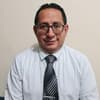Podcast
Questions and Answers
What remains constant in an isolated system according to the energy law?
What remains constant in an isolated system according to the energy law?
- Potential energy
- Kinetic energy
- Total energy (correct)
- Mechanical energy
Which statement accurately describes kinetic energy?
Which statement accurately describes kinetic energy?
- Energy resulting from an object's motion (correct)
- Energy transferred without particle movement
- Total energy of an object
- Energy stored in an object
How does conduction transfer heat?
How does conduction transfer heat?
- By the movement of fluids
- Through the mass movement of particles
- By molecular or atomic collisions (correct)
- Through electromagnetic radiation
What is required for convection heat transfer to occur?
What is required for convection heat transfer to occur?
What is resonance in the context of the breaking of a wine glass?
What is resonance in the context of the breaking of a wine glass?
What emit thermal energy by radiation?
What emit thermal energy by radiation?
Which factor does NOT affect the rate of emission or absorption of electromagnetic radiation?
Which factor does NOT affect the rate of emission or absorption of electromagnetic radiation?
How does a microwave heat food?
How does a microwave heat food?
What happens to mechanical energy during motion?
What happens to mechanical energy during motion?
What are the two ways conduction transfers energy?
What are the two ways conduction transfers energy?
What induces convection currents in liquids and gases?
What induces convection currents in liquids and gases?
Which factor does NOT influence resonance in the breaking of glass?
Which factor does NOT influence resonance in the breaking of glass?
Which statement about potential energy is accurate?
Which statement about potential energy is accurate?
How does electromagnetic radiation transfer heat?
How does electromagnetic radiation transfer heat?
What feature of microwaves allows them to heat food effectively?
What feature of microwaves allows them to heat food effectively?
What remains true about total mechanical energy in a system?
What remains true about total mechanical energy in a system?
Flashcards
Energy Law
Energy Law
Energy cannot be created or destroyed, only transferred.
Mechanical Energy
Mechanical Energy
Energy of position or motion of an object or body.
Kinetic Energy
Kinetic Energy
Energy of motion.
Potential Energy
Potential Energy
Signup and view all the flashcards
Conduction
Conduction
Signup and view all the flashcards
Convection
Convection
Signup and view all the flashcards
Radiation
Radiation
Signup and view all the flashcards
Resonance
Resonance
Signup and view all the flashcards
Isolated System
Isolated System
Signup and view all the flashcards
Total Mechanical Energy
Total Mechanical Energy
Signup and view all the flashcards
What are the two ways conduction occurs?
What are the two ways conduction occurs?
Signup and view all the flashcards
How does Convection work?
How does Convection work?
Signup and view all the flashcards
What is the relationship between radiation and temperature?
What is the relationship between radiation and temperature?
Signup and view all the flashcards
What are the 3 interactions of electromagnetic radiation with matter?
What are the 3 interactions of electromagnetic radiation with matter?
Signup and view all the flashcards
What is resonance?
What is resonance?
Signup and view all the flashcards
How does a microwave work?
How does a microwave work?
Signup and view all the flashcards
Study Notes
Energy Law
- Energy cannot be created or destroyed.
- Energy can only be transferred between objects.
- The total energy of an isolated system remains constant.
Mechanical Energy
- Mechanical energy is an object's energy due to its position or motion.
- Kinetic energy is energy of motion.
- Potential energy is stored energy.
- Total mechanical energy = kinetic energy + potential energy.
- During motion, total mechanical energy remains constant, but kinetic and potential energy can change.
Energy Transfer
Conduction
- Heat transfer without particle movement.
- Can occur within or between materials in contact.
- Heat transfer by atomic/molecular collisions or free electrons.
Convection
- Heat transfer involving particle movement.
- Effective in liquids and gases.
- Warm fluid rises, cool fluid falls creating convection currents.
Radiation
- Heat transfer without particle movement via electromagnetic radiation.
- All objects above absolute zero emit thermal radiation.
- Incoming radiation is reflected, transmitted, or absorbed by objects.
- Factors affecting radiation rate: temperature difference, surface area/characteristics, radiation wavelengths.
Interactions of Electromagnetic Radiation with Matter
Resonance and Wine Glass Breakage
- Resonance occurs when a sound wave's frequency matches an object's natural vibration.
- Sound wave energy is transferred & amplified, causing the glass to shatter if vibrations are too great..
Microwaves
- Microwaves generate electromagnetic radiation at 2.45GHz.
- Water molecules in food absorb energy through resonance, causing vibration.
- Vibration creates friction, leading to heat (conduction).
- Heated air circulates, assisting heat transfer (convection).
- Food is heated by radiation, convection, conduction, and resonance.
Energy Efficiency
- Energy transformations are never perfect.
- Energy is "lost."
- Systems require continual energy input.
- Efficiency is the percentage of effectively transformed energy.
Studying That Suits You
Use AI to generate personalized quizzes and flashcards to suit your learning preferences.





